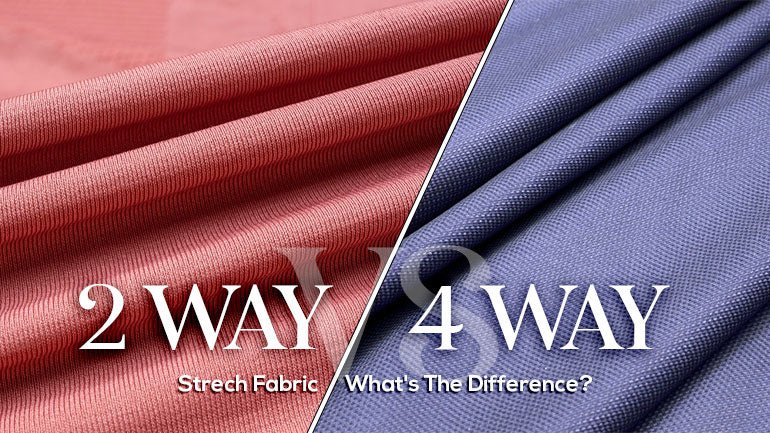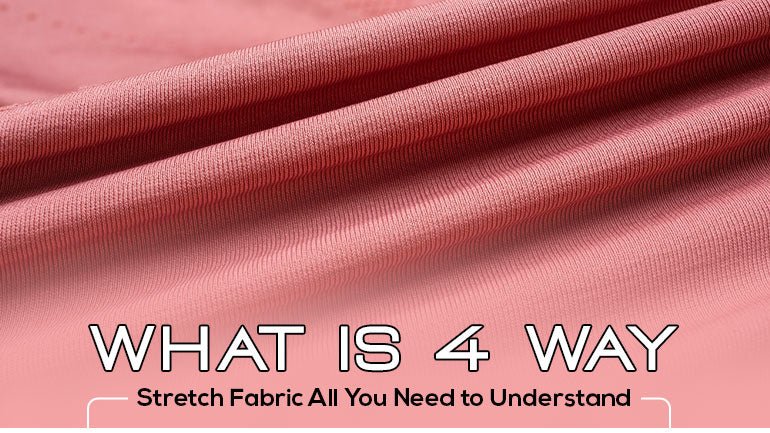Stretchy fabric is notoriously hard to sew because of its stretch. If you've ever attempted to sew stretchy fabric as the regular weaves, you've probably been pulled, twisted, or rolled around. However, stretchy fabrics don't need to be difficult to work with when you follow the right steps.
It is possible to sew stretchy fabrics using any sewing machine with just a couple of adjustments. Make use of a zig-zag or stretch stitch, which can move with the fabric, then switch to the ballpoint or stretch needle. It is important to sew slowly and steadily so that your fabric won't stretch or roll.
Sewing with 4-way stretch fabric can be intimidating, but with the right techniques and tools, it can be a breeze. Whether you're working with a spandex blend, these tips and tricks will help you achieve a professional-looking finish. Are you looking to learn how to sew 4 way stretch fabric? The winter season is around the corner, and the end of the year is the perfect time to sew something from comfy 4-way stretch fabric! In this article, we will discuss all the details on How to sew 4 way stretch fabric and whether Is there a trick to sewing stretchy fabric?
Expand your knowledge on What is 4 Way Stretch Fabric?
Tools You Will Need To Sew 4 Way Stretch Fabric
Before you start sewing, it's important to have the right tools. Here are some of the tools you will need to sew 4-way stretch fabric:
- A sewing machine with a stretch stitch setting
- Ballpoint or stretch needles
- Polyester or nylon thread
- Scissors or rotary cutter
- Pins or clips
- A cutting mat or rotary cutting surface
- A ruler or measuring tape
Tips for Sewing 4 Way Stretch Fabric
Now that you have the right tools let's go over some of the steps and tips you should follow when sewing 4-way stretch fabric.
Tip 1- Choosing the right needle
What Needle Should You Use for Stretch Fabric? The first and most important tip when sewing 4-way stretch fabric is to choose the right needle.
Most people ask Why Is My Sewing Machine Skipping Stitches? If you are using a standard sewing needle on your machine, it could result in skip stitching as well as holes to knit fabric. It is easy to prevent this by changing to a ball-point or stretch needle with a rounded edge. In general, ball-point needles are best suited for 4 way stretch fabric. Stretch needles are ideal for super stretchy and elastic fabrics like swim and dance Lycra. They are usually referred to as stretch fabric with four ways or two-way stretch fabric.
Tip 2- Use the right thread
The second trick to sewing 4 ways to stretch fabric is to choose the appropriate thread. Fabrics that stretch require thread that is able to stretch without breaking. A polyester thread is an ideal choice for this as it is stretchy and is also durable.
Tip 3 - Use the right Stitch
The next tip is to use the right stitch for sewing 4-way stretch fabric. But do you know What stitch is best for 4-way stretch? A stretch stitch or zigzag stitch is ideal for stretch fabrics as it will allow the fabric to stretch without breaking the stitches. The zigzag stitch is perfect for finishing seams on stretch fabrics as it creates a flexible and strong seam.
Tip 4- Use a Walking Foot
A walking foot is a special type of sewing machine foot that is designed to help feed the fabric evenly through the machine. This is especially important when sewing 4-way stretch fabric because it can prevent the fabric from stretching or puckering as it is sewn. If you do not have a walking foot, you can use a regular foot, but be sure to sew slowly and carefully.
Tip 5- Use Pins Sparingly
Pining four way stretch fabric isn't easy as the pins may make the fabric stretch or be out of alignment. Instead of pins, consider using clips and wonder clips. These will help hold the fabric in place as sewing. They won't harm the fabric and will keep it secure while you stitch.
Tip 6- Practice on Scrap Fabric
Before stitching your garment, it's recommended to practice sewing on some scraps first. This gives you the opportunity to test your stitching before committing to the final piece. Take a scrap of the fabric you are planning to use for your clothing and stitch some seams for testing to see how the fabric responds.
Tip 7- Take it Slow
Sewing with a 4 way stretch fabric takes patience and an even hand. Make sure to stitch slowly, especially around curves or in areas where you need to be more precise. This will prevent making mistakes and will ensure the seams are even and straight.
Tip 8- Press Carefully
When you press four way stretch fabric, it is essential to do it gently. Applying too much pressure or heat could cause the fabric to expand out of shape or even become damaged. Make sure to use a lower setting for your iron and press gently with a cloth or a press to shield the fabric.
Does it matter which way you cut 4-way stretch fabric?
The simple answer is yes, and it does matter which way you cut 4-way stretch fabric. In contrast to weaves with a grainline, the stretch fabric can stretch in any direction, and it is essential to know the direction of the greatest stretch. The direction that is the most stretchy is often referred to as being"the "stretchiest" direction and should always be perpendicular towards the grainline.
To determine the direction with the greatest stretch, move the fabric slowly in one direction before moving it towards the other direction. The direction with the greatest stretch is the stretchiest direction and must be parallel to the selvedge edge. Once you've identified the most stretchy direction, you can lay out your pattern pieces accordingly.
Final words
In attempting to provide a comprehensive guide, I have endeavored to cover all aspects of the topic at hand. However, if you find yourself feeling overwhelmed by the information presented, please remember that the basic tools you need to get started are minimal. All that is required to begin your journey into this craft is a set of stretch needles, a strong thread, and access to a simple zig-zag stitch sewing machine. With these basic materials, you can begin to explore the world of stretch sewing and all the creative possibilities that it holds.
FAQs
Can You Sew Stretchy Fabric With a Regular Sewing Machine?
Yes, you can sew stretchy fabric with a regular sewing machine. However, you need to make some adjustments to your machine's settings and use the right needle and thread to prevent the fabric from stretching or puckering during sewing.
Can You Sew Stretchy Fabric with a Straight Stitch?
It's possible to sew stretchy fabric with a straight stitch, but it's not recommended. A straight stitch doesn't have enough stretch, and it can break when the fabric is stretched. Instead, use a stretch stitch, zigzag stitch, or other stretch-friendly stitch types.
Do you need a special needle to sew stretch fabric?
Yes, you need a special needle to sew stretch fabric. A stretch needle or ballpoint needle is designed to prevent the fabric from getting damaged during sewing. These needles have a rounded tip that slides between the fabric threads rather than piercing them.
How to sew stretchy fabric to non-stretchy fabric?
To sew stretchy fabric to non-stretchy fabric, you need to use a stretch stitch or zigzag stitch to join the fabrics together. First, mark and cut the fabrics to the desired size and shape. Then, place the right sides of the fabrics together and sew using a stretch stitch or zigzag stitch. Be sure to stretch the fabric slightly as you sew to prevent puckering.
What is the strongest stretch stitch?
The strongest stretch stitch is the triple stretch stitch, also known as the super stretch stitch or lightning bolt stitch. This stitch consists of three parallel stitches, which provide extra strength and stability to the fabric. It's ideal for sewing stretchy fabrics that will be subjected to high stress, such as swimwear, activewear, and dancewear.
How do you hem a 4-way stretch?
If you want to hem a 4-way stretch fabric, you need to use a stretch stitch or a twin needle. First, mark and cut the fabric to the desired length. Then, fold the fabric up to the hemline and pin it in place. Sew the hem using a stretch stitch or twin needle, making sure to stretch the fabric slightly as you sew. Trim any excess fabric, and your hem is complete.



